The UK has delivered more than 70,000 uncrewed systems to Ukraine since Russia’s full-scale invasion began, according to a written answer to Parliament from Armed Forces Minister Luke Pollard.
The figure includes “hundreds of long-range attack drones, first person view (FPV), loitering munitions, intelligence, surveillance and reconnaissance (ISR) drones and maritime drones,” he said in response to a question from Conservative MP James Cartlidge.
While exact numbers for each drone category remain classified, Pollard confirmed that the support spans a wide range of capabilities. “As a former Defence Minister, he will know that for operational security reasons, we cannot provide details of the types of military drones purchased by the Ministry of Defence for its own purposes or those purchased for Ukraine,” he stated.
The announcement builds on a significant uplift in drone aid confirmed by Defence Secretary John Healey in June, who unveiled a tenfold increase in drone deliveries as part of a £350 million investment this financial year. “The UK is stepping up its support for Ukraine by delivering hundreds of thousands more drones this year and completing a major milestone in the delivery of critical artillery ammunition,” Healey said at the time.
Healey also highlighted the importance of British industry in driving this effort. “We are learning lessons every day from the battlefield in Ukraine, which British companies are using to develop advanced new drones to help protect Ukraine’s civilians and also strengthen our own national security.” Many of the drones delivered are British-designed and produced, with particular focus on systems that resist Russian electronic warfare, such as fibre-optic guided FPVs and jamming-resistant models.
The Drone Capability Coalition (DCC), co-led by the UK and Latvia, is central to this expansion. “The DCC is currently focusing on small UAS and interceptors through competitive tenders,” Pollard noted, adding that “as announced by the Defence Secretary in January, [it] will provide 30,000 FPV drones for Ukraine by August of this year.”
The UK’s broader military assistance also includes the delivery of 140,000 artillery shells since January, alongside an additional £247 million to train Ukrainian forces through Operation Interflex. A further £40 million is being channelled into NATO’s NSATU fund to sustain vehicle maintenance, fuel and other battlefield logistics.
British-supplied drones have been credited with stabilising sections of the front and now account for more battlefield casualties than artillery, according to Defence Intelligence assessments.
The scale-up in support follows the release of the 2025 Strategic Defence Review, which pledged over £4 billion to develop autonomous systems for the UK Armed Forces. Healey has framed the investment as one that serves both Ukraine and UK national defence. “This investment will help keep us secure at home and strong abroad, while ensuring the UK is a world leader in rapidly developing drone technology,” he said.


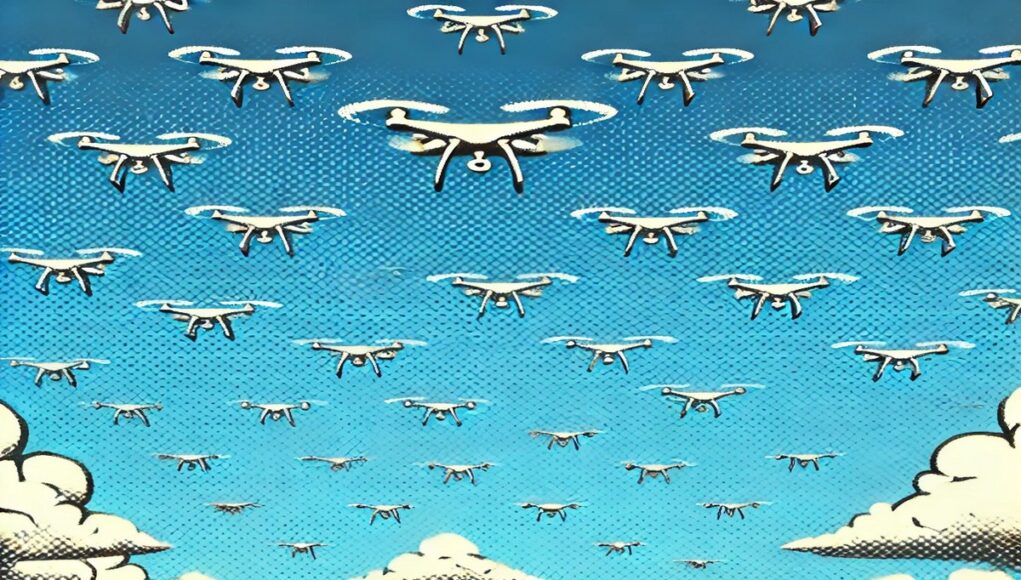
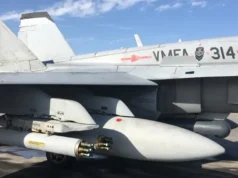

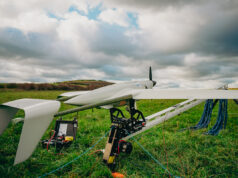
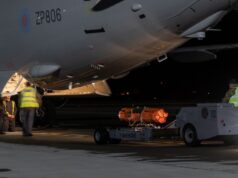
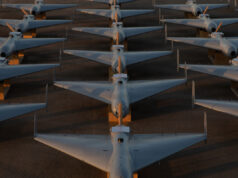
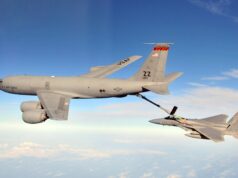
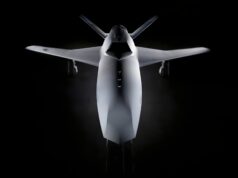

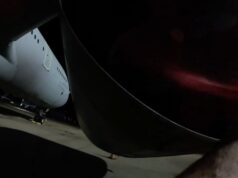
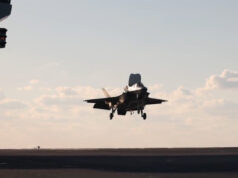

Someone’s making £££Millions from this Drone Picture.
Nice pic George. I had to look twice to be sure it wasn’t the dreaded alien UFO invasion 🙂
It’s been used a fair bit now. Reminds me of my old Rupert Annuals artwork.
The question is who is building these drones using which chips. I assume the answer is mostly from china, rather than using it as a chance to build up a domestic solution.
The article states many of the drones are designed and manufactured in the UK.
But that’s my point, by who, using what parts
Our domestic chip manufacturering is very limited after the last government refused to support it, so it’s unlikely domestic parts probably DJI parts put together in the UK.
I don’t think we will get such a detailed breakdown on an open source defence news website.
It should be publically available info, since contracts need to be published, even defence ones. They will be heavily redacted for security reasons but still need publishing
Let’s be honest… you cannot possibly believe they’ll provide it openly? It is at the same time unwise and not proportionate to the purpose you want to achieve. What could be ok ish is to display the overall number of UK jobs in the defense industrial base. This is the number you want to see growing. If you really want to have insight, get an engineering degree and get hired, then, you will have all the details of a tiny fraction of the operations. Should be safer this way, no? And if you think governing body is bad, get elected 😄.
They should show it, it would help focus minds on solving the clear problem
Well in reality most of the semi conductors will come from Taiwan, because that is where the west gets almost all its semi conductors…which is a big problem, because there is a no insignificant chance that any European NATO war with Russia will correspond to china going to war with the U.S. and either taking Taiwan, encircling Taiwan or just blasting its key infrastructure…which means no semiconductors for drone manufacturing..
Western Europe as an urgency does really need to develop its own semi conductor industry..
Well if they are arm based chips (which most likely are) then at least we can claim considerable IP input, though hardly making us rich. Obviously TMSC and the like including Samsung, produce most of these type of chips in Asia as the West can’t compete on cost, even the US produces only a small amount (TMSC only recently opened a foundry there) but is building a factory in Germany which I can see expanding quickly to supply military centric purposes. Maybe we can try to attract them though in reality Brexit pretty much cut off that remote opportunity especially as we don’t manufacture enough here to make it worthwhile sadly, even if drone production reaches wartime numbers I fear but then it might become a strategic matter perhaps. Not sure where more specialist chips come from but as early arm chips were used in nuclear missiles (PA semiconductor) they have wide potential here too as do other competing RISC designs. Until China invades Taiwan supply will be freely available though there have been historical supply restraints when new technology platforms take off as originally with cell phones and electric vehicles, then infotainment systems. Overall we clearly need more European production generally and joint programmes will help ensure supply no doubt.
@Steve I don’t think any of our enemies would openly share such information, and niether should we.
The pic is very “Space Invaders” late 1970’s-80’s. Even harder for the PBI with drones loitering waiting to drop death on anything they see.